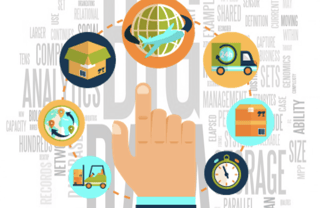The retail industry has always been one that’s focused on the vast amount of data it collects, looking at past data and general averages across wide swaths of customers to estimate future inventory needs, customer behavior, or forecasts.Today, this kind of data-driven approach is no longer enough — the best retailers are gaining customers, profit, and market share by moving into the word of real-time predictive analytics. In this blog post, we identify four of the top predictive analytics retail examples.
What's the Difference?
While retailers have always used data to attempt to make predictions, like using sales from previous years to estimate next year’s inventory or for future sales forecasts, average cart size and items most often purchased together to target offers, and so on, predictive analytics in the world of big data today means something more.
Predictive analytics refers to micro-level predictions — that is down to a specific individual — rather than macro-level predictions based on averages or generalities. For example, take a case of using past data to conclude that, in general, many people who buy item X (say, beer) also buy item Y (say, diapers) and therefore targeting purchasers of beer with promotions for diapers. This is a waste of resources for individuals who (1) would have bought diapers anyway and/or (2) did not fit with this “average” and would never buy diapers.
Instead, with predictive analytics in this scenario, you could look at each individual and evaluate his or her purchases in real time to accurately predict what he or she would buy based on their specific buying habits. Predictive analytics can do all of this automatically and at scale.
Get Predictive Everywhere
Predictive analytics is not just about better marketing and targeting of customers, though that’s certainly part of it (just see what American retailer Target has done with its efforts). In fact, the power of predictive analytics has perhaps even more impact in other parts of retail businesses.

For example, these predictive analytics retail examples address four major challenges in a scalable way:
1. Pricing: Using predictive analytics to set prices allows retailers to take all possible factors into account in real time, something that would be impossible without data science and machine learning. In addition to considering competitors’ pricing, a predictive pricing model can take into account everything from real-time sales data to information about the weather to optimize prices for a particular point in time.
2. Inventory management: Poor inventory management leads to a loss in sales which in turn paints an inaccurate picture of lower demand for certain items, making future order predictions based on that past data inherently inaccurate. Instead, smart retailers use real-time data to move inventory where it’s needed before it’s too late. Additionally, they use predictive analytics to decide what to stock and where based on data about regional differences in preferences, weather, etc.
3. Recommendation engines: Of course, it’s easy to see how e-commerce organizations can use predictive analytics to make specific recommendations for certain customers on what they might like based on past purchases or even their social networks (i.e., recommending products their friends also bought). Even brick-and-mortar retailers, though, are starting to consider how real-time data can inform recommendations of their sales people on the floor when they know a certain customer is in the store.
4. Smart revenue forecasting: Instead of forecasting revenue based on historical data from shoppers who may not even be customers anymore, in the fickle world of retail, predictive analytics allows for more accurate forecasts based on the predicted buying habits of brand new customers.




